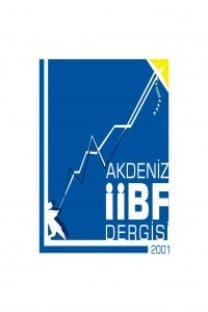Seçilmiş NATO Ülkelerinde Askeri Harcamaların Yakınsaması: Doğrusal Olmayan Birim Kök Testinden Kanıtlar
NATO’nun faaliyetleri kapsamında ortaya çıkan maliyetlerin karşılanması sorunu, diğer bir ifade ile üye ülkelerin adil bir oranda katkı sağlaması konusu veya yük paylaşımı mevzusu çeşitli dönemlerde ve farklı yoğunluklarda NATO’nun gündemine taşınmaktadır. 2014 ve 2016 yıllarında yapılan NATO’nun üye ülkeler zirvesinde de bu yük paylaşımı sorunu günde gelmiş ve üye ülkelerin savunma harcamalarındaki sürekli azalmaları durdurmalarına ve savunma harcamalarının GSYİH’larının %2’sine yükseltilmesinin gerekliliğine yönelik kararlar alınmıştır. Bu çalışma, 1960-2014 döneminde 14 NATO üyesi ülkenin askeri harcamalarının GSYİH’larına oranlarındaki davranış eğilimlerini araştırmaktadır. Bu amaçla, söz konusu NATO üyesi ülkelerin askeri harcamalarının GSYİH’larına oranlarının, dönem boyunca en yüksek askeri harcama/GSYİH payına sahip olan ABD’ye bir yakınsama davranışı gösterip göstermediği incelenmektedir. Çalışmada doğrusal olmayan birim kök testlerinden KSS (Kapetanios-Snell-Shin) ve AESTAR (Asymetric Exponential Smooth Transition Auto-regressive) modelleri kullanılmakta ve elde edilen bulgular, incelenen NATO örnekleminde ittifaka üye ülkelerin askeri harcamalarının GSYİH’ya oranlarının, ABD’nin askeri harcamalarının GSYİH’sına oranına doğru yakınsadığını ve bu yakınsama biçiminin önemli ölçüde doğrusal olmayan bir yapı sergilediğini göstermektedir.
Military Expenditure Convergence in the Selected NATO Countries: Evidence from Non-linear Unit Root Tests
The burden-sharing problem, in other words, the contribution of the member states to bear the costs emerged at a fair rate as a result of NATO activities has become the current issue of NATO in various times. The burden sharing problem came to the fore also in NATO summits in 2014 and 2016, and decisions have been taken to stop the continuous decrease of the defense expenditures of NATO members and to increase the defense expenditures of the countries to 2% of their GDP. In this research, it is aimed to reveal the behavioral tendencies in the proportion of the military expenditures of 14 NATO member states to their GDP in 1960-2014 period and also analyze whether the proportions of the military expenditures of NATO members to the GDP exhibit a convergence behavior at this time to USA that has the highest military expenditure/GDP share. Kapetanios-Snell-Shin and Asymmetric Exponential Smooth Transition Autoregressive models from the nonlinear unit root tests are used and the findings show that the proportion of military expenditures of NATO member states to the GDP converge to the percentage of military expenditures of USA to the GDP, and this manner of convergence has a significantly nonlinear structure.
Keywords:
Military Expenditures, Convergence, Non-linear Unit Root Tests,
___
- Alptekin, A., Levine, P. (2012) Military expenditure and economic growth: A meta-analysis, European Journal of Political Economy, 28: 636-650.
- Apergis, N., Christou, C., Hassapis, C. (2013) Convergence in public expenditures across EU countries: evidence from club convergence, Economics & Finance Research, 1: 45–59.
- Arvanitidis, P., Kollias, C., Anastasopoulos, K. (2014) Is There an International Convergence in Defense Burdens? Some Initial Findings, Peace Economics, Peace Science, & Public Policy, 20(4): 611-620.
- Bağbaşlioğlu, A. (2016) Güncelliğini Yitirmeyen Bir Sorun Olan Yük Paylaşımına Yeni Bir Çözüm Arayışı: Akıllı Savunma ve NATO, Gazi Akademik Bakış, 10(19):209-225.
- Bernard, A., Durlauf, S. N. (1995) Convergence in International Output, Journal of Applied Econometrics, 10(2): 97-105.
- Chang, T., Lee, C., Liu, W. (2012) Nonlinear adjustment to purchasing power parity for ASEAN Countries, Japan and World Economy, 24(4):325-331.
- Dunne, J.P., Tian, A. (2013) Military Expenditure and Economic Growth: A Survey, The Economics of Peace and Security Journal, 8(1):5-11.
- Evans, P., Karras, G. (1996) Convergence Revisited, Journal of Monetary Economics, 37: 249-265.
- Güriş, S., Güriş, B., Tıraşoğlu, M. (2017) Do Military Expenditures Converge in NATO Countries? Linear and Nonlinear Unit Root Tests Evidence, Theoretical and Applied Economics, Vol. XXIV, 2(611):237:248.
- Kapetanios, G., Shin, Y., Snell, A. (2003) Testing for a Unit Root in the Nonlinear STAR Framework, Journal of Econometrics, 112(2):359-379.
- Lau, C. K. M., Demir, E. Bilgin, M. H. (2015) A Nonlinear Model of Military Expenditure Convergence: Evidence from Estar Nonlinear Unit Root Test, Defense, and Peace Economics, 1-12.
- Leybourne, S. Newbold, P.,Vougas, D. (1998) Unit Roots and Smooth Transitions, Journal of Time Series Analysis, 19(1):83-97.
- Nelson, C.R., Plosser, C.I. (1982) Trends and Random Walks in Macroeconomics Time Series: Some Evidence and Implications, Journal of Monetary Economics, 10:139-162.
- Oğuzlu, T. (2012) NATO’nun Dönüşümü ve Geleceği, Ortadoğu Analiz, Volume 4, Issue 40: 8-18.
- Sala-i Martin, X. (1996) The Classical Approach to Convergence Analysis, The Economic Journal, Vol, 106, No. 437:1019-1036.
- Sawhney, B., Anorou, E., DiPietro, W.R. (2016) The world distribution of military spending: is there a convergence?, International Journal of Computational Economics and Econometrics (IJCEE), Vol. 6, No. 4:351-365.
- Sollis, R. (2004) Asymmetric Adjustment and Smooth Transitions: A Combinations of Some Unit Root Tests, Journal of Time Series Analysis, 25(3):409-417.
- Sollis, R. (2009) A Simple Unit Root Test Asymmetric STAR Nonlinearity with An Application to Real Exchange Rates In Nordic Countries, Economic Modeling, 26(1):118-125.
- ISSN: 1302-9975
- Başlangıç: 2001
- Yayıncı: Akdeniz Üniversitesi
Sayıdaki Diğer Makaleler
Sophio KVATCHADZE, Serkan AKINCI
Yunanistan Krizinin Post-Keynesyen Analizi
Zeynep ERÜNLÜ, Barbaros GÜNERİ
Şekip YAZGAN, Reşat CEYLAN, M. Şükrü MOLLAVELİOĞLU
Cumhuriyet Halk Partisi’nin Antalya Üyelerinin Parti İçi Demokrasi ve Oligarşiye Bakış Açısı
Toplumsal Dışlanmadan Vatandaşlık Tartışmalarına Suriyeli Kent Mültecileri
Göçün Siyasallaşması ve Macaristan’da Rekabetçi Otoriterliğin Yükselişi
M. Gökhan BİTMİŞ, Azize ERGENELİ, Fuat OKTAY
Bankalarda Mali Başarısızlığın Tahmin Edilmesine Yönelik Bir Uygulama: Avrupa Birliği Ülkeleri
Turizm Sektöründe Vergi İndirimi ve Ekonomik Etkileri: Bir Sosyal Hesap Matris Uygulaması
